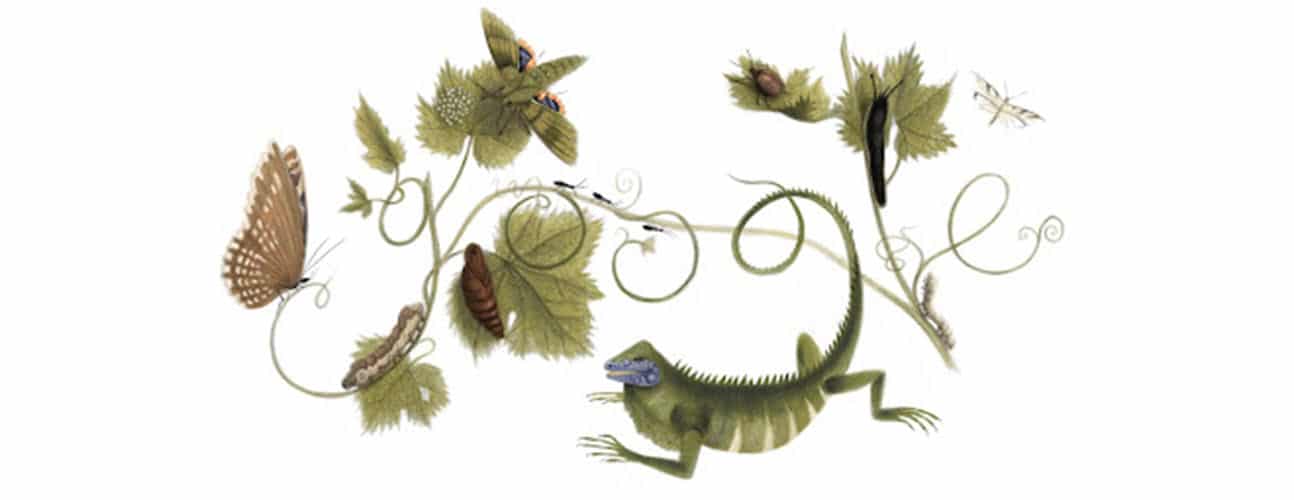Maria Sibylla Merian: Trailblazing Entomologist and Artist of the Natural World

Image Courtesy: Google Doodle
Maria Sibylla Merian (2 April 1647 – 13 January 1717) was a German entomologist, naturalist and scientific illustrator. She was one of the earliest European naturalists to observe insects directly.
Life and Career
She was born on 2 April 1647, in Frankfurt, Germany, and was raised in a family of artists and publishers. Merian’s interest in natural history was sparked at an early age, and she began collecting insects and studying their life cycles as a teenager. She was also trained in scientific illustration by her stepfather, Jacob Marrel, who was a renowned painter and engraver.
In 1665, Merian married Johann Andreas Graff, another artist, and engraver, and the couple had two daughters. Merian continued to pursue her interest in natural history, and in 1675, she published her first book, “Neues Blumenbuch” (“New Book of Flowers”), which contained illustrations of flowers and insects.
Merian’s most significant contribution to science came in 1699 when she traveled to Suriname, then a Dutch colony in South America, to study the local flora and fauna. During her two-year expedition, she collected and studied a wide variety of insects, spiders, and other animals, documenting their life cycles in stunning detail.
Merian’s observations and illustrations of the metamorphosis of insects challenged the prevailing belief that insects were generated spontaneously, and her work paved the way for future studies of insect development. After returning to Europe, Merian continued to publish her findings in several scientific books, including “Metamorphosis Insectorum Surinamensium” (“The Metamorphosis of the Insects of Surinam”), which was published in 1705.
Merian died in Amsterdam, the Netherlands, on 13 January 1717, at the age of 70. Her legacy has had a lasting impact on the study of natural history and scientific illustration, and she is recognized as one of the most important naturalists of her time.
Award and Legacy
Maria Sibylla Merian’s contributions to natural history and scientific illustration have had a significant impact on the field, and her legacy continues to be celebrated today.
In recognition of her groundbreaking work, the Maria Sibylla Merian Society was established in 2014 to promote research on Merian and her scientific achievements. The society hosts conferences, publishes research, and provides resources for scholars studying Merian’s life and work.
Merian has also been recognized with several awards and honors. In 2016, the German government issued a commemorative coin featuring Merian’s portrait to mark the 300th anniversary of her death. Additionally, several schools, parks, and other public spaces have been named after Merian in recognition of her contributions to science and art.
Overall, Merian’s legacy as a pioneering naturalist and scientific illustrator continues to inspire and inform new generations of scientists and artists. Her meticulous observations and illustrations of insects have contributed to a better understanding of their life cycles, and her legacy remains an important part of the history of natural history and scientific illustration. On 2 April 2013, Google celebrated Maria Sibylla Merian’s 366th Birthday with a doodle.
Observer Voice is the one stop site for National, International news, Sports, Editor’s Choice, Art/culture contents, Quotes and much more. We also cover historical contents. Historical contents includes World History, Indian History, and what happened today. The website also covers Entertainment across the India and World.

